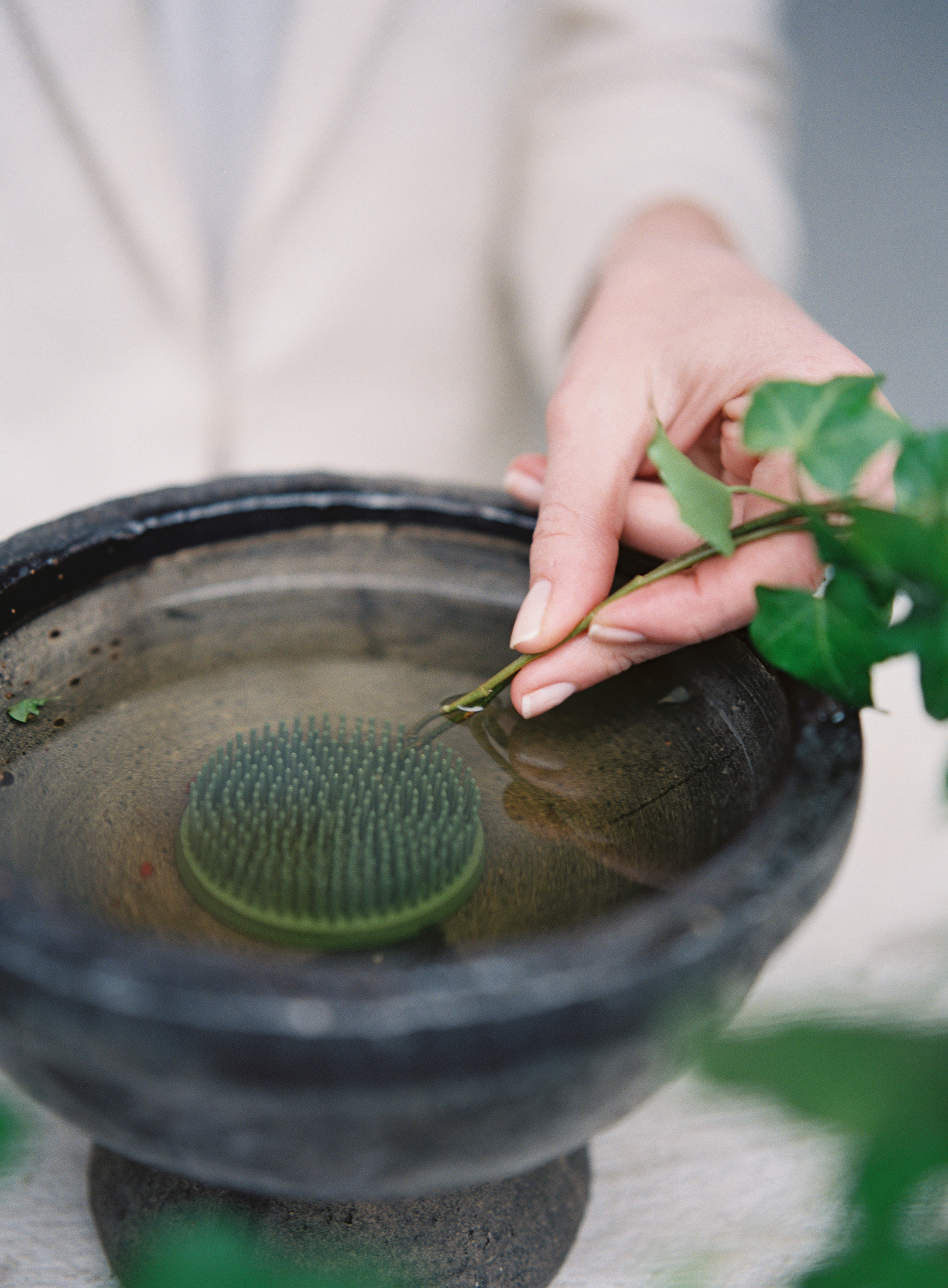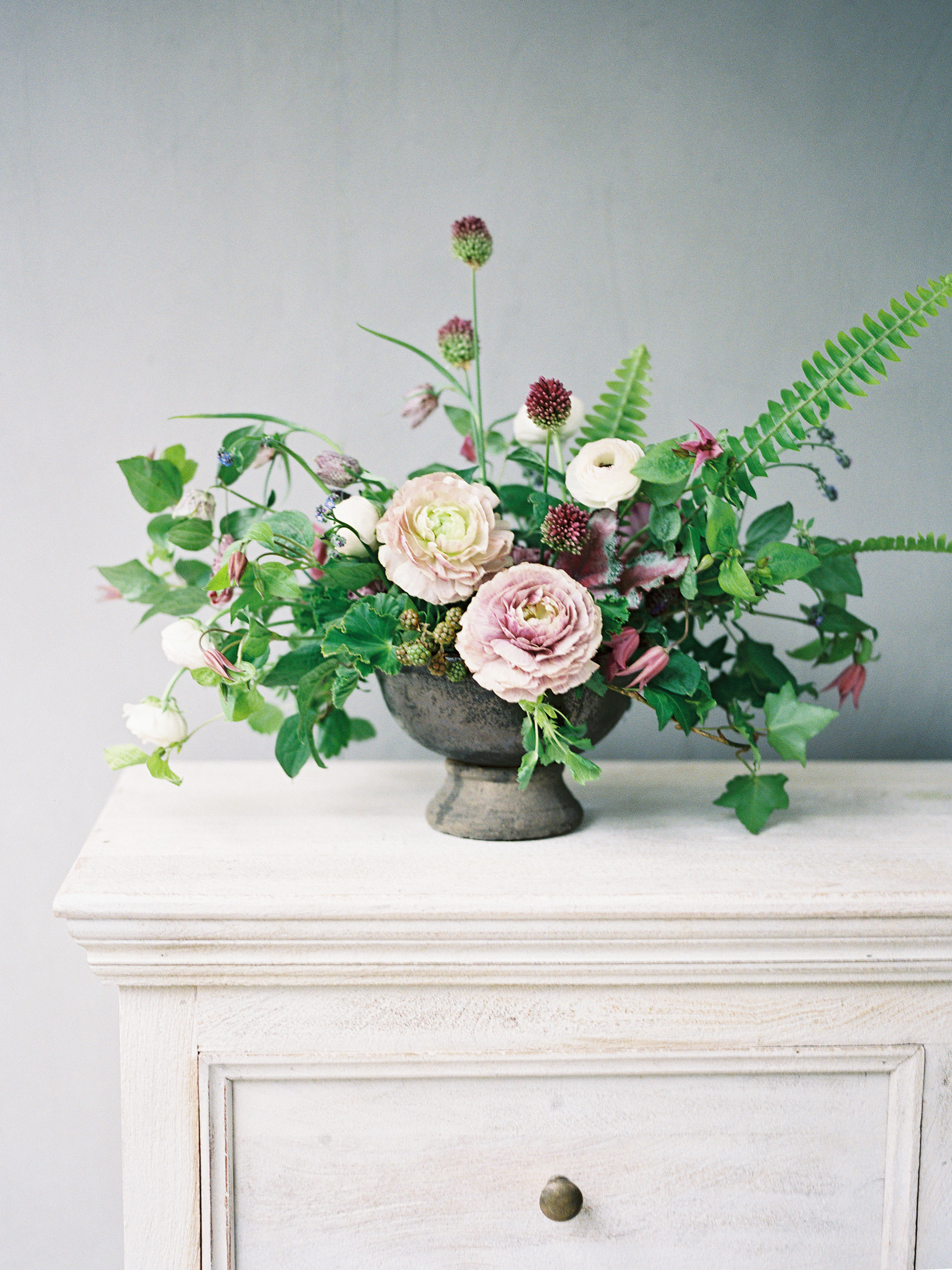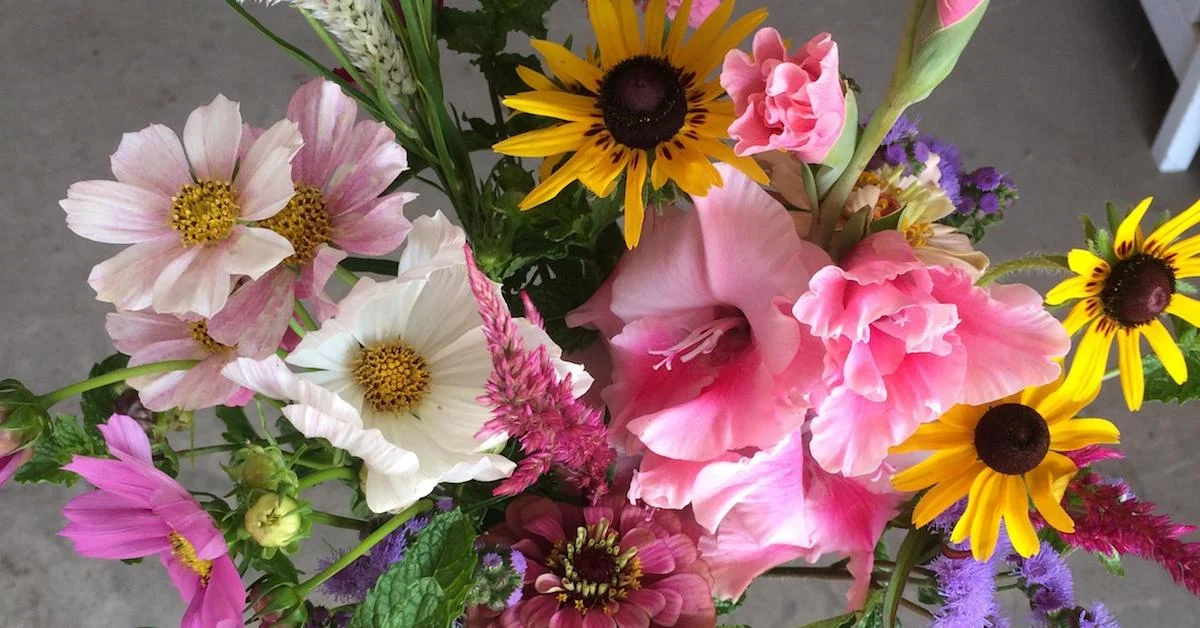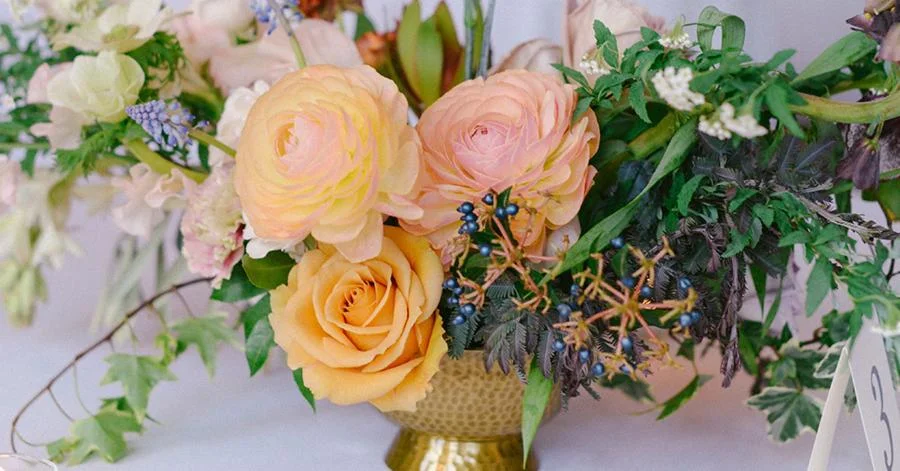Video: Arranging Flowers Using Wire, Foam, and Frogs
When it comes to the floral mechanics of arranging a centerpiece, there are three most commonly used: chicken wire, flower frogs, or floral foam.
Chicken Wire in Floral Arrangements
One of the three of the most commonly used mechanics for holding flowers in a vessel is chicken wire. To create a chicken wire cage that will support stems, and yet still preserve the opportunity for a bit of organic movement, cut a piece of chicken wire mesh that when rolled into a loose cylinder is roughly the width of the container itself.
Next, crunch in and mold both ends of the cylinder until the whole structure is a ball that fits snugly into your container. Secure with perpendicular strips of waterproof tape pressed firmly along or under the lip of the vessel.
Heather Payne Photography
Flower Frogs Used in Floral Design
The floral frog is an alternative mechanism capable of supporting more weight (like woody or fruit-bearing branches) and allows for more asymmetry than chicken wire. Flower frogs are also known as pin frogs, spiky frogs, or kenzans, which is Japanese for “sword mountain.”
The traditional design is a small but very heavy circular or rectangular metal plate covered in a field of closely packed upward-facing brass pins, onto and between which stems of flowers are secured.
Working from the outside edge in toward the center allows for best results, and flowers placed into pin frogs also tend to stay where you initially put them, rather than shift around during transport the way chicken wire designs are prone to do.
To use a frog correctly, you must first secure it tightly to the base of your vessel with waterproof clay. The best way to do that is by completing the following:
Completely cover at least the outer and inner bottom edge (if not the entire base) of the apparatus with the clay or putty.
Stretch and press the clay so that it sticks tightly to the base.
Lastly, press the clay-covered frog base firmly against the bottom of the vessel, filling in any gaps or thin spots with extra clay.
Your goal is to create a tight seal around the frog, preventing water from loosening it from the bottom of the vessel. Properly secured frogs can be used over and over again with the same container, as they tend to stay put through cleaning!
To remove them when that’s needed, warm up the putty around the frog with a heat gun or hair dryer, and use a screwdriver to pry the base loose from the vessel and pop it right out.
Floral Foam in Floral Design
If your designs require a reliable water source or are arranged in disposable containers for pick-up weddings and events, floral foam is the ideal support system. Soak all floral foam elements overnight before cutting them to size and placing them in your containers.
As long as the lip of your vessel is dry, it’s also important to secure blocks in place with strips of waterproof tape. If you plan to add particularly heavy branches or flowers, you can also wrap the block of foam in chicken wire before nestling it into the vessel, which keeps the foam block from crumbling under the stress of so many stems!
Foam usually allows you to complete design work more quickly than you can with chicken wire or frogs, and you can still achieve a “loose” look if you give yourself space by spreading out your base greenery a bit.
Heather Payne Photography
Key Points:
Consider the end goal or the environment your design will live in—it can help you choose the best mechanics for a given job.
The key with chicken wire vessel prep is to take care not to use too much wire—the extra gets cumbersome and leaves less room for your stems!
Be sure to use a generous amount of clay to secure a flower frog to the base of a vessel, and then work from the outer to the inner edge of the frog when placing stems.
Soaking flower foam overnight will give you the best results. Then, be sure to secure it well via waterproof tape, adding extra water to the vessel.








